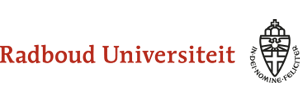American English Phonetics
Another American English Faculty Project
6.5 R-colored vowels
Crudely, rhotacization (or r-colored vowels) means that you pronounce GA /r/ simultaneously with the vowel.
Ladefoged (1975) states that rhotacization may come from different articulatory gestures such as retracting the front of the tongue; a bunching up of the back of the tongue; a retraction of the root of the tongue into the pharynx.
In GA, the vowels /ɜr/ and /ər/ are entirely rhotacized, as in firm, offer, and for many speakers also /ɛr/, /ɔr/, and /ɑr/ are fully rhotacized, as in share, four, star.
In the case of the close vowels, /ɪr/ and /ʊr/, only the second half is rhotacized. The vocalic quality of GA /ɪr/ and /ʊr/ varies between GA /iː/ and /ɪ/, and /uː/ and /ʊ/, respectively. Observe that there is no opposition between tense vowels and lax vowels before /r/, and the choice of symbol therefore is somewhat arbitrary.
Some examples are:
• beer, fear, frontier, reindeer, here, nearer, mirror
• pure, manure, Europe, moor, tour, Boer
Some speakers use /jɜr/ instead of /jʊr/ in more frequent words. Try it if you like.
For GA /ɛr/ use the vowel quality as for GA /ɛ/.
• bear, Eric, vary, parent, pairing, narrow, air, heir
The vocalic quality of GA /ɔr/ is much like that of AN /ɔr/.
• bore, for, four, gourd, morning, mourning, cork, orb, Morse, cores
GA /ɜr/ and /ər/ have the same quality, as in bird and honor. They can be produced by bulging the tongue high in the mouth somewhere between the soft and hard palates. The sides of the tongue should touch the upper back teeth, but the center of the tongue should not touch the roof of the mouth. (These vowels could also be transcribed as /r̩/.)
